Authors:
ABSTRACT
Aim
The aim of this study is to report on the mineral density of the enamel of primary molars related to the age of the child
and to compare the mineral density of sound and carious enamel in those molars.
Methods
This study included 23
children and 41 extracted primary molars. The primary molars of 21 children met all of the inclusion criteria, and these were studied and
scanned using microCT. The teeth were embedded in Impregum (3M ESPE) and stored in a solution of tap water with thymol crystals.
Sixteen primary molars from 7 children were used to compare the mineral density in sound and carious areas, and 13 primary molars
from 11 children were used for the comparison between mineral density and time in situ.
Results
A statistically significant difference
(31) was found between the mineral density in carious enamel and sound enamel (p 0.0006). In addition, a significant
relationship was observed between the mineral density of sound enamel and the time the teeth had been in situ (r 0.698). We
also found two teeth with radiolucencies in the dentin with the enamel clinically showing only a non-cavitated carious lesion in the
enamel. No significant differences were found between the mean mineral density in sound enamel surfaces and unaffected areas in
surfaces of molars with enamel caries (p 0.4373).
Conclusion
Local and general differences in enamel mineralisation are
presented. Post-eruptive maturation seems to be present not only in permanent teeth but also in primary molars. Carious enamel has
significantly less mineral density than clinically sound enamel.
PLUMX METRICS
Publication date:
Keywords:
Issue:
Vol.17 – n.1/2016
Page:
Publisher:
Cite:
Harvard: M. EC Elfrink, K. Kalin, L. J. vanRuijven, J. M. tenCate, J. S. Veerkamp (2016) "MicroCT study on the enamel mineral density of primary molars", European Journal of Paediatric Dentistry, 17(1), pp60-64. doi: https://www.ejpd.eu/wp-content/uploads/pdf/EJPD_2016_1_10.pdf
Copyright (c) 2021 Ariesdue

This work is licensed under a Creative Commons Attribution-NonCommercial 4.0 International License.
